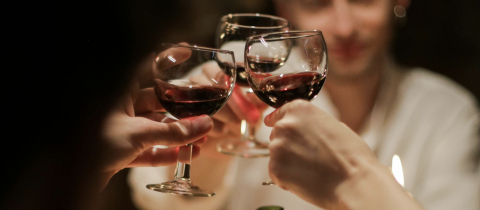Glass is made by heating sand and then allowing it to cool down. Sand, or silicon dioxide, has a highly ordered arrangement of its silicon and oxygen atoms. In other words, it has a well-defined crystal structure. When sand is liquified by heat and then cooled, this ordered arrangement of atoms is lost, resulting in a more random pattern characteristic of a glass. The sand is said to have been "vitrified." When lead compounds are added to molten sand, a glass with high density, durability and a special brilliance is formed. This is known as “lead crystal.” Typically, lead crystal contains 24-32% lead oxide. If beverages are stored for a long time in decanters made of lead crystal, tiny amounts of lead can leach out. The maximum allowable level of lead in drinking water is 50 micrograms per litre, a concentration that can be exceeded in wines that are kept in crystal decanters for a long time. Port wine, for example, can steadily increase its lead concentration up to 50 fold in four months, from 90 to 4000 micrograms per litre. Brandy stored over five years can have over 20,000 micrograms per litre. So while there is no problem serving alcoholic beverages from lead crystal decanters at your dinner party, they should not be stored in them for any period of time.
Want to comment on this article? View it here on our Facebook page!







